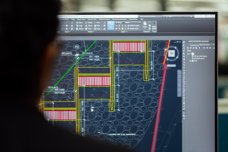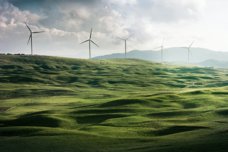What is smart agriculture?
Smart agriculture describes the application of modern technologies to increase crop yields qualitatively and quantitatively and to improve farming management. It's aimed at reducing the costs and risks involved in growing crops, while minimizing the inputs in terms of irrigation, fertilizers, herbicides, pesticides, etc.
Why use UAVs in smart agriculture?
Smart agriculture brings together a variety of advanced and evolving technologies and applications, including UAV remote sensing. UAVs offer many advantages over traditional field measurements. For instance, they can map larger crop fields in less time, thus enabling faster responses to crop-related problems. When compared to satellite remote sensing, UAVs are less affected by the atmosphere - they can capture excellent data on a cloudy day, for example.
What can UAVs be used for?
- Crop irrigation management. UAVs can be used to locate areas of a crop that need additional watering. This has a positive effect on overall crop production. In vineyards, for example, UAV-based irrigation is being used to enhance water distribution; this helps to achieve uniform maturity and enhances product quality.
- Crop insurance. UAVs are potentially useful for crop damage assessments, since they can capture images over a wide coverage area. This reduces the time and cost involved, while improving the accuracy of inspections and supporting efficient documentation.
- Weed mapping. Weeds negatively influence plant growth. Instead of spraying entire crop fields with herbicides, farmers can choose site-specific weed management (SSWM). UAV imaging can help to create maps to enable this, especially when used in combination with machine learning techniques.
- Crop damage detection. UAV-based crop imaging data can be analysed by data processing tools to spot changes in plant biomass and health. As a result, infections may be identified in the early stages, allowing farmers to take action to minimize losses.
- Fertilizer on crops. Controlling the quantity of (nitrogen) fertilizer benefits crops, budgets and the environment. Many farmers use UAVs to acquire information and map their crop fields in order to provide plants with the fertilizers they require while using less nitrogen overall.
- Flooded crop area inspection. For insurance loss evaluations, a UAV can be flown over the regions that have been damaged to gather data. The data can then be processed and displayed to calculate crop loss.
We've discussed just some of the uses that UAVs can have in smart agriculture. They can be equipped with a variety of sensors in order to achieve these uses. To learn about that, check out our article on five sensors that are used on smart agriculture UAVs .
If you’d like to learn more about this topic, check out this Geoversity course on UAVs in Precision Agriculture






